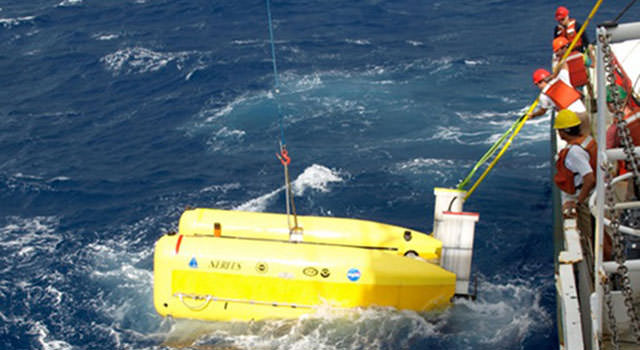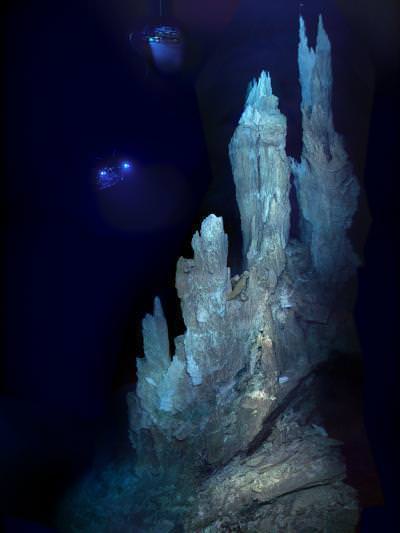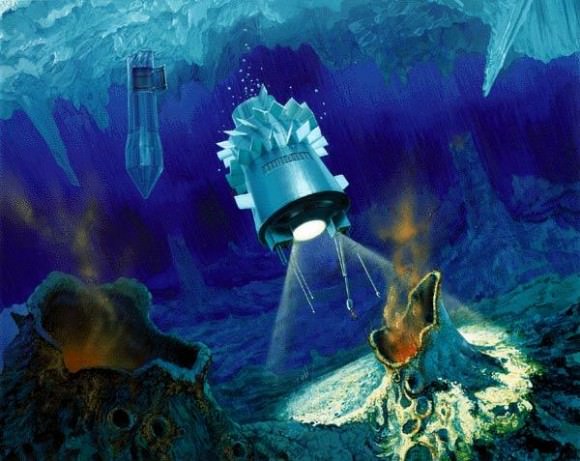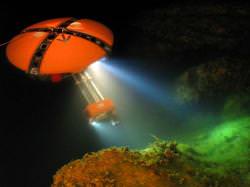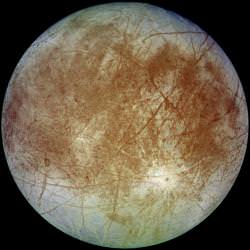A new look at how chemicals on Jupiter’s moon Europa may be reacting together could provide new insight to how chemical reactions could be occurring in the moon’s icy crust, despite frigid temperatures. Researchers have found that water and sulfur dioxide react together very quickly, even at temperatures hundreds of degrees below freezing. Because the reaction occurs without the aid of radiation, it could take place throughout Europa’s thick coating of ice. If this is occurring, it would revamp current thinking about the chemistry and geology of this moon and perhaps others.
Europa has temperatures around 86 to 130 Kelvin (minus 300 to minus 225 degrees Fahrenheit), and in those extremely cold conditions, most chemical reactions require an infusion of energy from radiation or light. On Europa, the energy comes from particles from Jupiter’s radiation belts. Because most of those particles penetrate just fractions of an inch into the surface, models of Europa’s chemistry typically stop there.
“When people talk about chemistry on Europa, they typically talk about reactions that are driven by radiation,” says Goddard scientist Reggie Hudson. “Once you get below Europa’s surface, it’s cold and solid, and you normally don’t expect things to happen very fast under those conditions,” said Reggie Hudson, from NASA Goddard’s Astrochemistry Laboratory.
“But with the chemistry we describe,” said Mark Loeffler, who is first author on the paper being published in Geophysical Research Letters, “you could have ice 10 or 100 meters [roughly 33 or 330 feet] thick, and if it has sulfur dioxide mixed in, you’re going to have a reaction.”
Spectroscopy shows there is sulfur in Europa’s ice, and astronomers believe it originates from the volcanoes of Jupiter’s moon Io, then becomes ionized and is transported to Europa, where it gets embedded in the ice. But originally, astronomers thought not much of a reaction could occur between water ice and the sulfur.
Loeffler and Hudson sprayed water vapor and sulfur dioxide gas onto quarter-sized mirrors in a high-vacuum chamber. Because the mirrors were kept at about 50 to 100 Kelvin (about minus 370 to minus 280 degrees Fahrenheit), the gases immediately condensed as ice. As the reaction proceeded, the researchers used infrared spectroscopy to watch the decrease in concentrations of water and sulfur dioxide and the increase in concentrations of positive and negative ions generated.
Even with the extremely cold temperatures, the molecules reacted quickly in their icy forms. “At 130 Kelvin [about minus 225 degrees Fahrenheit], which represents the warm end of the expected temperatures on Europa, this reaction is essentially instantaneous,” said Loeffler. “At 100 Kelvin, you can saturate the reaction after half a day to a day. If that doesn’t sound fast, remember that on geologic timescales-billions of years-a day is faster than the blink of an eye.”
To test the reaction, the researchers added frozen carbon dioxide, also known as dry ice, which is commonly found on icy bodies, including Europa. “If frozen carbon dioxide had blocked the reaction, we wouldn’t be nearly as interested,” said Hudson, “because then the reaction probably wouldn’t be relevant to Europa’s chemistry. It would be a laboratory curiosity.” But the reaction continued, which means it could be significant on Europa as well as Ganymede and Callisto, two more of Jupiter’s moons, and other places where both water and sulfur dioxide are present.
The reaction converted one-quarter to nearly one-third of the sulfur dioxide into different products. “This is an unexpectedly high yield for this chemical reaction,” said Loeffler. “We would have been happy with five percent.”
What’s more, the positive and negative ions produced will react with other molecules. This could lead to some intriguing chemistry, especially because bisulfite, a type of sulfur ion, and some other products of this reaction are refractory-stable enough to last for quite some time.
This new finding will certainly prompt new remote observations of Europa to see whether evidence of any reaction-based products can be found.
Source: JPL





